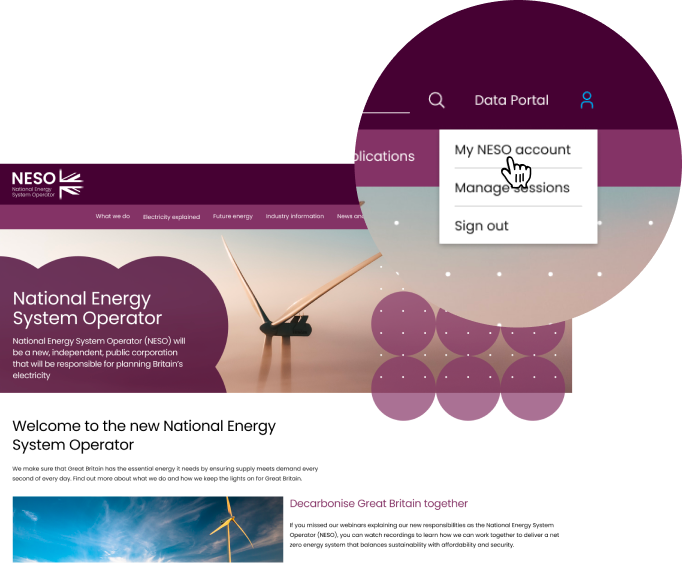Evidence handbook and other G2WQ submission resources
The Connections Reform Evidence Window is now closed.
This page contains guidance that supported customers during their submissions. We have left this page live for customers as support for any re-submissions required following initial checks.
As part of the reformed connections process, projects are assessed and assigned a status based on their readiness and Strategic Alignment with the UK’s clean energy goals:
- Gate 2 applies to projects that meet the new requirements for readiness and Strategic Alignment. These projects can secure a confirmed connection date, connection point, and queue position.
- Gate 1 applies to projects that do not meet the Gate 2 criteria. These projects will receive a Gate 1 offer or have the option to agree to terminate their connection request. Gate 1 projects will not be assigned a confirmed connection date but may progress through future windows if readiness is demonstrated.
The G2TWQ process is an evidence-based approach that ensures projects are assessed fairly and consistently against the latest Gate 2 criteria and strategic energy plans, including the Clean Power 2030 Action Plan. This process enables NESO, DNOs, and independent DNOs (IDNOs) to determine which projects are ready to connect and align with the UK’s long-term energy needs.
To progress through the queue, developers must demonstrate both readiness and alignment with one or more strategic criteria. Projects that do not meet these criteria will be offered alternative options, such as a Gate 1 position or the option to terminate their existing agreements.
Firstly, check where you need to submit your evidence. Depending on your project it may be to NESO directly, or to your DNO. If you are submitting to NESO directly, you will do this via the existing connections portal.

Customer Guidance Essentials
As we help you navigate evidence submission, we recognise that guidance is being updated frequently in response to customer queries. We understand this can feel overwhelming, particularly for those who do not work on connections day to day. We do not want to add unnecessary complexity. However, we do want to respond to your requests for additional information and bring clarity to support your connections reform journey.
This document outlines:
- A statement from NESO announcing the date for the evidence window closure.
- Details of a new process for customers who submitted evidence prior to 23:59 on
Monday 11 August 2025 to review and validate their evidence submission. - An update on the initial checks we will perform on evidence and details of the
resubmission process following initial checks. - A new expedited complaints process.
- Connections Reform timelines.
- The top 10 stumbling blocks we are seeing so far, and how to navigate them.
- A full list of the guidance documents available to help you with your submission.
Evidence submission guidance documents
This guidance is designed to support project developers and investors in successfully completing detailed checks resubmissions as part of the Gate 2 to Whole Queue (G2TWQ process).
This handbook is designed to support project developers and investors in navigating the G2TWQ process. It sets out the evidence required to support a Readiness Declaration and explains how to complete each section of the submission. It also provides guidance on the new methodologies and criteria approved as part of the Connections Reform programme.
By following this handbook, you will understand:
- Whether your project is in scope for a Gate 2 offer
- How to provide the necessary evidence of project readiness
- How Strategic Alignment is assessed and what criteria apply
- What happens if your project does not meet the Gate 2 criteria
- This handbook will support you through each stage of the process, helping ensure your project can connect to the network efficiently and contribute to delivering the UK’s clean energy future
The handbook supports customer supplying evidence to both NESO directly and DNOs.
If you need to submit details directly to your DNO, please see this useful guide on the ENA's website.
Download Evidence Submission Handbook (top tips)
A Mod App (Modification Application) is used to change a connection. You may need to do this as part of Connections Reform.
Customers have requested written Mod App guidance. We have published this new guide to walk customers through each step.
Queue management
Following OFGEM’s decision to approve TMO4+ we have provided further clarification on the previously shared Queue Management Guidance, please refer to the Queue Management Cover Note on page linked below for a summary.
LoA guidance
Below are a set of useful templates to support your application.
| This explanatory Pro Forma should be used in the instance where the person who has signed the Readiness Declaration is not a Statutory Director but has been given authority to sign on behalf of the Company. | Download Authority to Sign - Legal Pro Forma |
| This explanatory Pro Forma should be use in the instance where the term of the Lease is less than 20 years. | Download Option Agreement - Lease Agreement Pro Forma |
| This explanatory Pro Forma should be use in the instance where User/Applicant is not the party who has entered into the secured land rights. | Download Secured Land Rights - Pro Forma |
For any customers wishing to progress connections applications to Gate 2, the next important step is the Readiness Declaration form. For most customers, we anticipate you can proceed directly to reviewing the Readiness Declaration template and start to gather your evidence.
